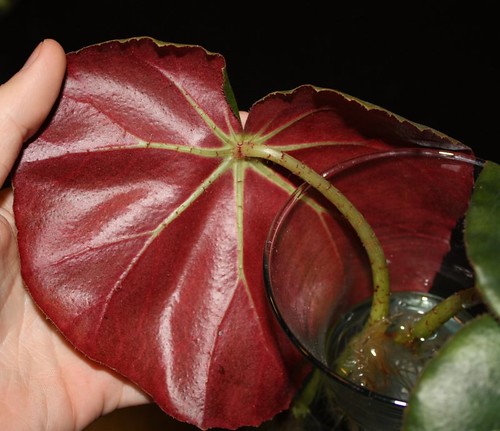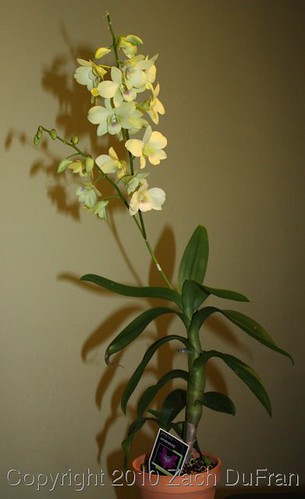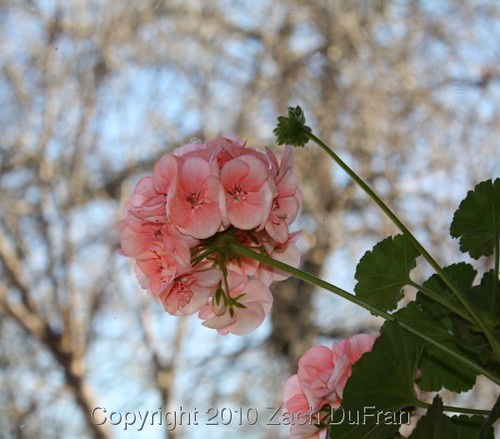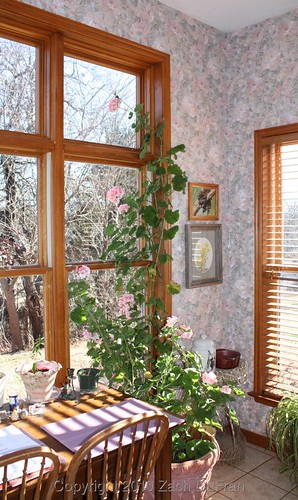I'm happy to announce that the MidAmerica chapter of the International Aroid Society (IAS) will be having their second meeting at the Missouri Botanical Gardens (MOBOT) in St. Louis, Missouri on April 24th. The MOBOT has one of the largest research collections of Aroids in the world,
the largest herbarium, beautiful outdoor gardens and the world famous Climatron tropical conservatory. The MOBOT is one of the largest botanical gardens in the country and well respected by other botanical gardens worldwide.
All plant enthusiasts are invited to attend the events of April 24. You don't have to be a member of the IAS or even know what an Aroid is. (If you like plants, then you probably know a bunch of different plants from the Aroid family, but just didn't know they were related.)
We have a full day of activities planned, but you can just attend half, if you would like. Here are a couple of highlights:
- Dr. Thomas Croat will be giving two formal presentations on his research with Aroids and will also be leading tours of the herbarium, greenhouses and the MOBOT grounds.
- Joep Moonen will be in town from French Guiana and will be talking about the Aroids of South America and particularly the collection of the Roberto Burle Marx estate.
- Steve Lucas will be talking about how he maintains a tropical rainforest in northwest Arkansas.
- Steve Marak will talk about growing temperate Aroids outdoors in our climate.
- We will also have a plant trade. Bring cuttings or plants you would like to share with others, if you have any. If not, you just might be going home with something anyway. :)
This is a meeting you will not want to miss! If you are in the area, be there! If you are within 6 hours of driving, I would encourage you to consider driving over for a long weekend in St. Louis and see some of the other things St. Louis has to offer.
It's going to be a great meeting. Here's the tentative agenda:
Opening Gathering:
8:30-9:30 AM. Coffee
Opening: 9:30 AM A review of Systematic work with Araceae in the New World. Thomas B. Croat, Missouri Botanical Garden
10:15 AM Coffee break
10:45 AM A preview of the Philodendron from some arid areas of Brazil and a visit to the Burle Marx Collection in Brazil, Joep Moonen, Emerald Jungle Village, French Guiana.
11:15 AM Missouri Botanical Gardens Grounds Tour. This tour will concentrate on some of the grounds near the Ridgway Center since at least some of us will return there for lunch.
12:15 PM Lunch break
Opening of Afternoon session:
1:00 PM An introduction to aroid genera, Thomas B. Croat, Missouri Botanical Garden
1:45 PM Cultivating tropical plants efficiently in a temperate environment, Steve Lucas, Siloam Springs, Arkansas.
2:15 PM Cultivating Aroids outdoors in a temperate area. Steve Marak, Springdale, Arkansas
2:30 PM Coffee break and plant swap and give away
3:00 PM Tour of Missouri Botanical Garden Aroid Collection
3:45 PM Tour of Research complex at Lehmann Building herbarium. This will include seeing the world’s largest collection of herbarium specimens, demonstrations on the use of Lucid, a session at the CATE Araceae site at Kew and an explanation of Croat’s research efforts with revisionary and floristic studies.
4:30 PM Refreshments
5:00 PM Adjournment for dinner (any who would like to meet at a restaurant)
If you think you might be able to come, I would appreciate an RSVP so we can have the right amount of space and refreshments.
Stay update by visiting the
MidAmerica chapter website.







